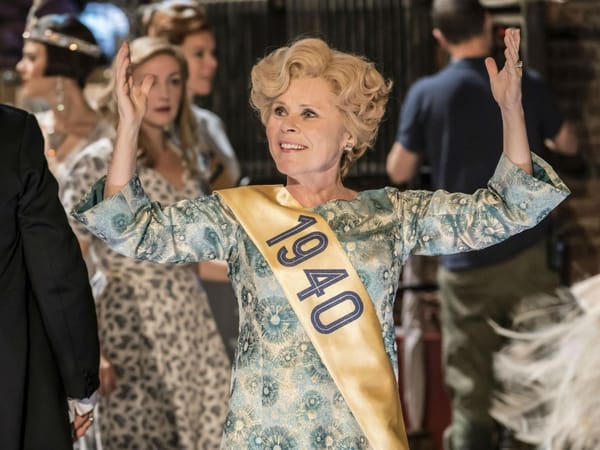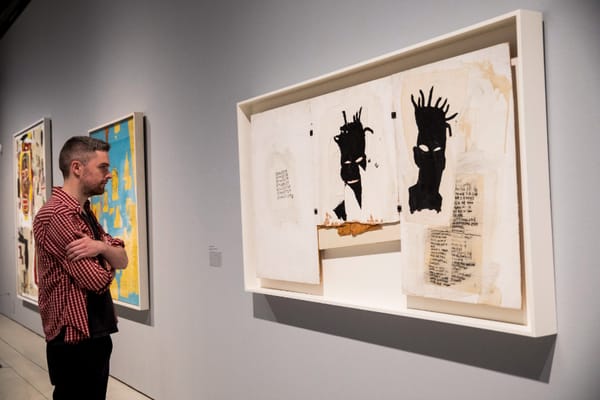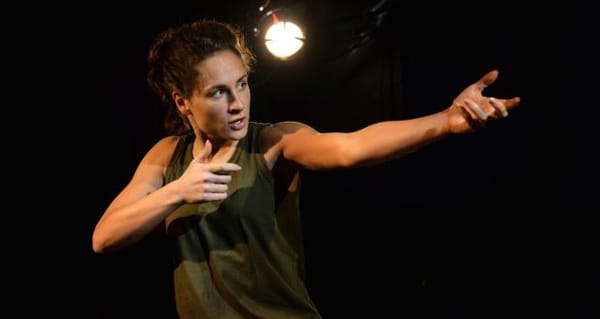Brexit, greed, and the making of modern Britain
Lyndsey Turner drags the legend of St. George and the Dragon into the modern era

There is more death in that kind of life and more life in that kind of death. That is the message of Saint George in reference to a life lived under the rule of the despotic dragon. On the face of things these two characters should be at the heart of an epic tale of heroism versus evil, but Rory Mullarkey’s play is not simply a classic heroic legend – it is a commentary on the people of England. The day of the hero is gone and we must all band together to overcome the new dragons of capitalist greed, bureaucracy, and indifference: a powerful and insightful message, although its delivery in this production had a subtlety more akin to that of George’s great three-headed nemesis than the damsel in distress.
This tale at first takes on a very literal form. The dragon himself is a tyrannical ruler who can transform into the form of the three-headed, fire-breathing beast. However, we soon see the village evolve into a post-industrial revolution town and from a town it grows into a modern city akin to any in Britain today. So too grows the dragon, progressively taking on a new, less tangible form in each of the three ages. Although the setting is described as an island ‘much like our own’, it is like our island in almost every way. The modern city is complete with pub brawls, hen parties, and microwave meals – a blatant indication that this is a message targeted towards the real Britain of the present day.
The message is clear: the burden of improving the world can no longer fall on just one person, and the solution is certainly not to be found in an outdated, historical figure. The elephant in the room – or should I say dragon – is Brexit. A proponent of change, the play is a damning indictment of the belief that our solutions lie in going back to a simpler time, but it is also critical of those who fervently oppose this view – we can sometimes become so utterly caught up in what we think is right that it causes us to destroy the things we were trying to defend in the first place. Solidarity and a sense of community is the one constant that can pull us through.
“The play is a damning indictment of the belief that our solutions lie in going back to a simpler time”
Despite the message being very relevant, the production itself was almost three hours in length, and combined with the fact that the storyline is designed to repeat itself three times, at times it made me feel as though we needed a dragon to set fire to the stage to spice the plot up a bit. Lyndsey Turner’s production is speckled with humour throughout, keeping the mood at the right level. This is helped by the cast, notably Julian Bleach who plays the dragon, whose character and style reminded me of Count Olaf in the film adaptation of A Series of Unfortunate Events. Toeing the line between evil and hilarity, his persona was very satisfyingly reptilian. Despite the light-hearted mood, it is remarkable how effectively Luke Brady manages to change the atmosphere to one of sadness with his convincing portrayal of the Miller’s Son – the pitiable victim of the dragon’s fury. John Heffernan as Saint George paints a portrait of a confident character throughout, who is so set in his ways that he cannot understand why modern society can’t be the way it used to be. His overly-patient sweetheart Elsa, played by Amaka Okafor, is strongest when torn away from the conventional role of the heroine, when in conflict with Henry (Richard Goulding) or her father Charles (Gawn Grainger). The young talent Reuel Guzman who plays ‘boy’ stands out for his assured performance.
The scenery and technical aspects of the performance were brilliant. This was especially true for all manner of things relating to fire. Things were constantly spontaneously igniting, crackling or exploding all over the stage to the extent that I began to question whether there was indeed an actual dragon crouched behind the scenes. Despite the technical brilliance – and in part because of it – I felt slightly short changed watching the battle between George and the dragon. What we had all been expectantly awaiting turned out to be more of a radio commentary by the villagers of a supposedly nail-biting fight in the invisible sky above us. Admittedly recreating a battle involving a three headed dragon may have been fairly technically challenging, but given the excellency of the other scenery I wouldn’t put it past the crew to have pulled it off. The lack of a convincing battle scene was partially compensated for by the pyrotechnically heavy display of three dragon heads exploding as they crashed into the ground.
It would have been better if the message hadn’t been so obvious in its structured three-part delivery, but I thought that it was unique and very relevant. The characters are almost all referred to by job title rather than name, perhaps for a reason: in our everyday lives we ourselves see here the butcher, there the driver, and the town crier. Mullarkey is trying to tell us that these people do not represent us, they are us – each and every one of us must be prepared to be heroic in our own way.








